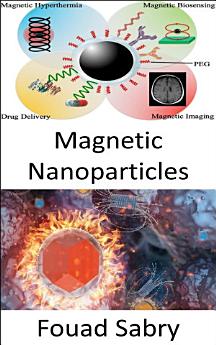Magnetic Nanoparticles: How magnetic nanoparticles can barbecue cancer cells on lunch?
Пра гэту электронную кнігу
Magnetic nanoparticles are a class of nanoparticle that can be manipulated using magnetic fields. Such particles commonly consist of two components, a magnetic material, often iron, nickel and cobalt, and a chemical component that has functionality. While nanoparticles are smaller than 1 micrometer in diameter, the larger microbeads are 0.5–500 micrometer in diameter. Magnetic nanoparticle clusters that are composed of a number of individual magnetic nanoparticles are known as magnetic nanobeads with a diameter of 50–200 nanometers. Magnetic nanoparticle clusters are a basis for their further magnetic assembly into magnetic nanochains. The magnetic nanoparticles have been the focus of much research recently because they possess attractive properties which could see potential use in catalysis including nanomaterial-based catalysts, biomedicine and tissue specific targeting, magnetically tunable colloidal photonic crystals, microfluidics, magnetic resonance imaging, magnetic particle imaging, data storage, environmental remediation, nanofluids, optical filters, defect sensor, magnetic cooling and cation sensors.
How You Will Benefit
(I) Insights, and validations about the following topics:
Chapter 1: Magnetic nanoparticles
Chapter 2: Nanoparticle
Chapter 3: Coprecipitation
Chapter 4: Thermal decomposition
Chapter 5: Microemulsion
Chapter 6: Iron oxide nanoparticle
Chapter 7: Magnetic nanoparticles
(II) Answering the public top questions about magnetic nanoparticles.
(III) Real world examples for the usage of magnetic nanoparticles in many fields.
(IV) 17 appendices to explain, briefly, 266 emerging technologies in each industry to have 360-degree full understanding of magnetic nanoparticles' technologies.
Who This Book Is For
Professionals, undergraduate and graduate students, enthusiasts, hobbyists, and those who want to go beyond basic knowledge or information for any kind of magnetic nanoparticles.










